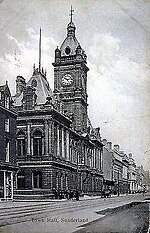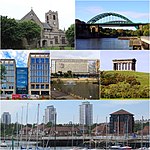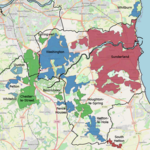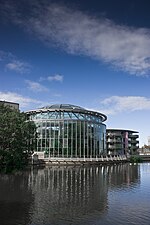St Mary's Church, Sunderland
1835 establishments in England19th-century Roman Catholic church buildings in the United KingdomChurches in the City of SunderlandGothic Revival architecture in Tyne and WearGothic Revival church buildings in England ... and 5 more
Grade II listed Roman Catholic churches in EnglandGrade II listed churches in Tyne and WearRoman Catholic churches completed in 1835Roman Catholic churches in Tyne and WearSunderland

St Mary's Church is a Roman Catholic parish church in the city centre of Sunderland, Tyne and Wear, situated on the corner of Bridge Street and St Mary's Way. It is a Grade II listed building, designed by Ignatius Bonomi. Built from 1830 to 1835, and is the earliest Gothic revival church surviving in Sunderland.
Excerpt from the Wikipedia article St Mary's Church, Sunderland (License: CC BY-SA 3.0, Authors, Images).St Mary's Church, Sunderland
Bridge Street, Sunderland Ashbrooke
Geographical coordinates (GPS) Address Phone number External links Nearby Places Show on map
Geographical coordinates (GPS)
| Latitude | Longitude |
|---|---|
| N 54.9082 ° | E -1.3827 ° |
Address
St Mary's Catholic Church
Bridge Street
SR1 1TA Sunderland, Ashbrooke
England, United Kingdom
Open on Google Maps








